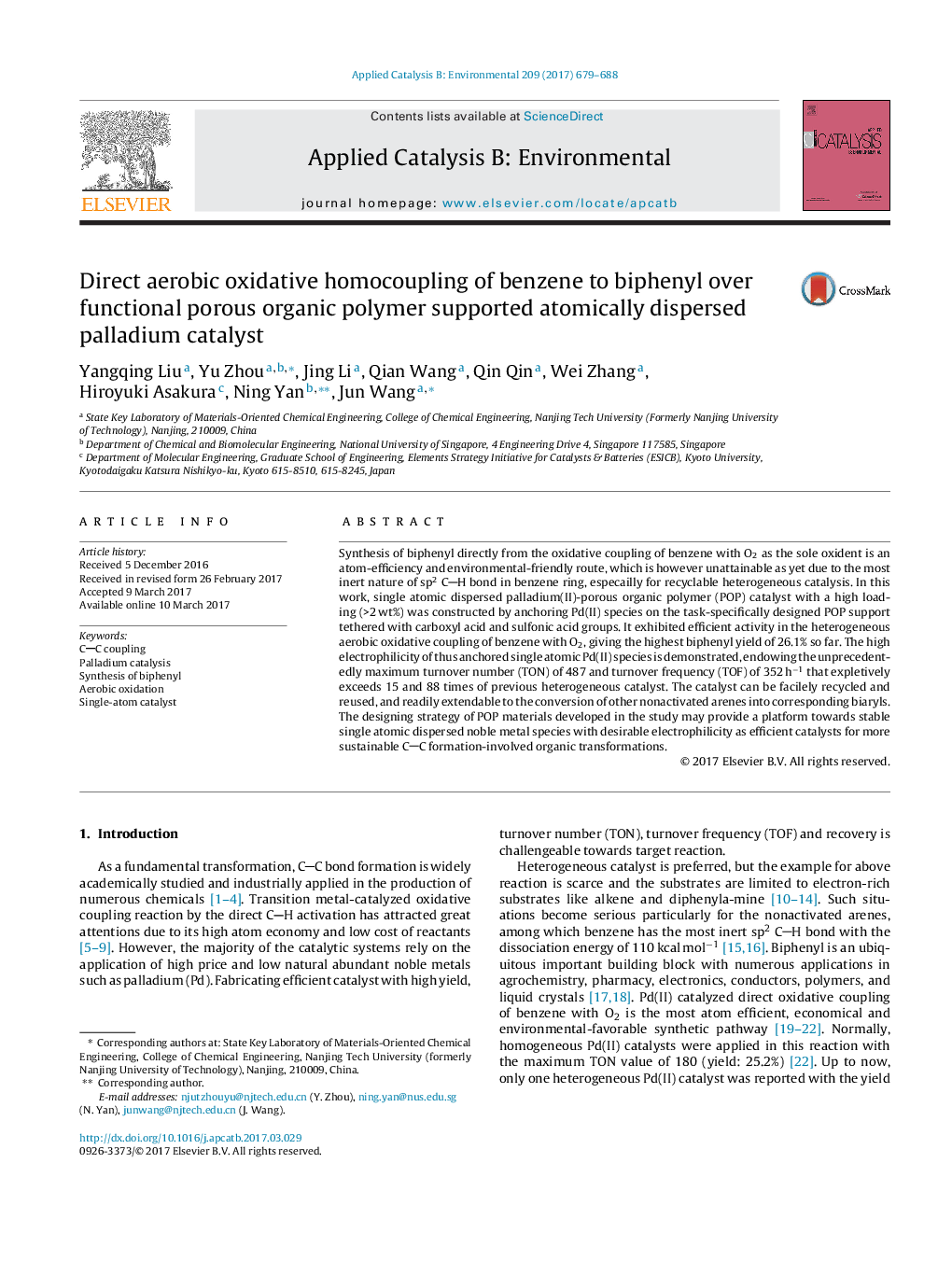| Article ID | Journal | Published Year | Pages | File Type |
|---|---|---|---|---|
| 6454262 | Applied Catalysis B: Environmental | 2017 | 10 Pages |
â¢Heterogeneous catalysis for benzene coupling with O2 into biphenyl is achieved.â¢It is achieved on the porous organic polymer (POP) supported Pd(II) sites.â¢Novel specific POP material is designed for single-atom dispersion of Pd(II) sites.â¢Atomically dispersed, highly electrophilic Pd(II) sites account for its activity.
Synthesis of biphenyl directly from the oxidative coupling of benzene with O2 as the sole oxident is an atom-efficiency and environmental-friendly route, which is however unattainable as yet due to the most inert nature of sp2 CH bond in benzene ring, especailly for recyclable heterogeneous catalysis. In this work, single atomic dispersed palladium(II)-porous organic polymer (POP) catalyst with a high loading (>2Â wt%) was constructed by anchoring Pd(II) species on the task-specifically designed POP support tethered with carboxyl acid and sulfonic acid groups. It exhibited efficient activity in the heterogeneous aerobic oxidative coupling of benzene with O2, giving the highest biphenyl yield of 26.1% so far. The high electrophilicity of thus anchored single atomic Pd(II) species is demonstrated, endowing the unprecedentedly maximum turnover number (TON) of 487 and turnover frequency (TOF) of 352Â hâ1 that expletively exceeds 15 and 88 times of previous heterogeneous catalyst. The catalyst can be facilely recycled and reused, and readily extendable to the conversion of other nonactivated arenes into corresponding biaryls. The designing strategy of POP materials developed in the study may provide a platform towards stable single atomic dispersed noble metal species with desirable electrophilicity as efficient catalysts for more sustainable CC formation-involved organic transformations.
Graphical abstractDownload high-res image (216KB)Download full-size image
